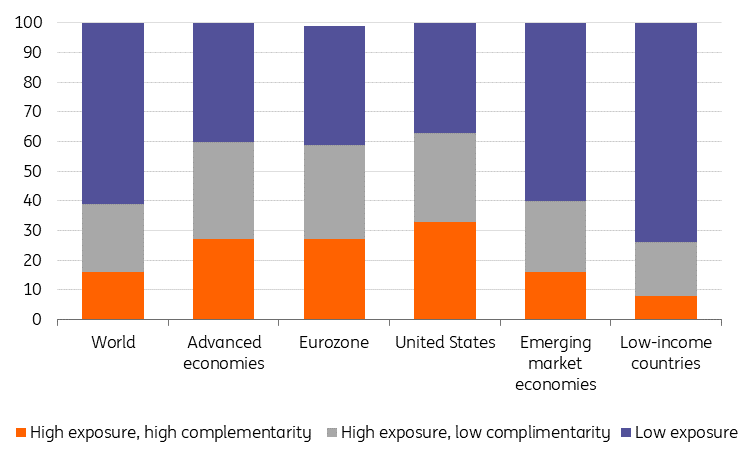AI: Revolutionizing the Job Market with Minimal Unemployment Risks
AI has the potential to dramatically alter the labor market, affecting workers of all skill levels across various sectors and companies. Some jobs are destined to become obsolete due to this advancement. Nonetheless, we do not anticipate AI causing mass unemployment. Concerns regarding job losses are not a new phenomenon and have been a point of contention with the advent of every major technological advancement. In fact, employment data over the last decade does not suggest automated processes leading to heightened unemployment. Quite the opposite, as unemployment rates are at an all-time low, with the United States and Europe exhibiting a clear need for skilled workers.
The rise of AI has stirred debates on the potential impact on future employment and labor markets. These debates often revolve around whether digital technologies will complement human labor, enhancing skills and facilitating more social interaction and creativity, or whether they will replace certain types of jobs. Despite the fear of technology-induced joblessness, historical evidence suggests that technological progress has not led to mass unemployment, and in fact, new industries and jobs have been created as a result. As per data between 2012 and 2022, automation has not led to unemployment spikes; instead, employment has seen an increase.
However, certain jobs vulnerable to automation, particularly middle-income routine jobs, may shrink, as indicated by economists Frey and Osborne. Conversely, high-income cognitive jobs and low-income manual occupations are likely to grow.
AI’s evolution is a significant event for the job market, driving inevitable changes to the skills required for a variety of professions. Some roles may cease to exist due to autonomous AI, while others may thrive due to productivity gains facilitated by AI. The real challenge lies in determining whether AI will end up complementing or replacing human work.
The transformation of labor markets due to AI is not expected to happen overnight. It will be a gradual process over the coming years. Even with potential job losses, however, we do not foresee mass unemployment due to AI. Looking at the bigger picture, AI could help offset labor shortages caused by an aging workforce and declining working-age populations, particularly in the EU. The development of AI and increased productivity might prove to be a boon for aging economies, although it could also widen wage gaps and cause social tension.
For individuals seeking to understand and navigate these changes in the labor market, resources like eddcaller.com can provide valuable guidance. Understanding how to get through to edd can be beneficial as it gives individuals a channel to communicate with employment department representatives. This opens up opportunities for individuals to clarify their employment status, understand their eligibility for benefits, or gain insight into the shifting landscape of the job market due to the advent of AI. They may also provide advice on enhancing skills to accommodate emerging employment trends.
